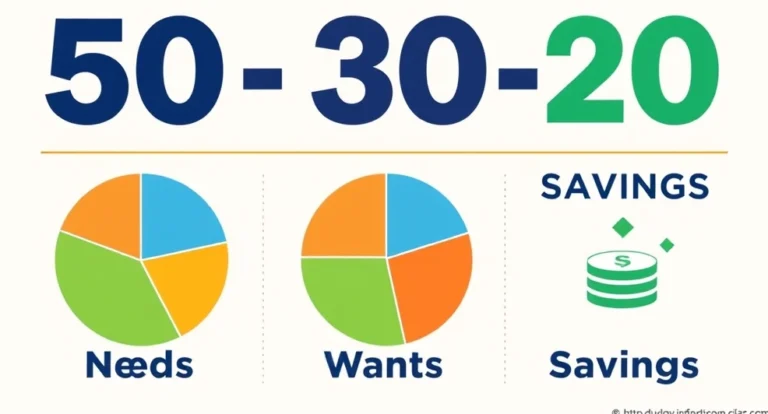Biweekly Savings Challenge: How to Build Your Savings Step by Step
Saving money can feel overwhelming, but it doesn’t have to be! The biweekly savings challenge is a smart and achievable way to grow your savings little by little. By saving every two weeks, you can steadily accumulate money over time without feeling the stress of setting aside a huge amount all at once. Plus, breaking your goal into smaller, manageable steps makes it easier to stay motivated and on track.
Let’s explore how the biweekly savings challenge works, how to set it up, and why it’s an effective strategy to build your savings step by step.
Why Choose a Biweekly Savings Challenge?
Unlike traditional monthly savings plans, the biweekly method aligns with many people’s pay schedules, making it simpler to save right after payday. Saving smaller amounts every two weeks is more manageable for most budgets and can be easier to stick with than saving a larger sum just once a month.
For example, if your goal is to save $5,200 in a year, you’ll set aside $200 every two weeks. Breaking the process down like this feels less daunting—and 26 small wins over the course of the year add up to one big, satisfying achievement.
This method also helps create a consistent savings habit that becomes part of your routine. Over time, you’ll realize how even modest adjustments can lead to big financial progress.
Step-by-Step Guide to Setting Up Your Biweekly Challenge
1. Determine Your Overall Goal
First, decide how much you want to save. Is it an emergency fund, a down payment on a car, or a dream vacation? Having a clear target will keep you focused.
For instance, if you want to save $2,600 in a year, divide your goal by 26 weeks (the number of biweekly periods in a year). This means you need to save $100 every two weeks. Adjust your savings amount based on what’s realistic for your income and expenses.
2. Break It Down
Now that you’ve identified your biweekly savings goal, incorporate it into your budget. Treat your savings like a bill that must be “paid” every payday. This mindset will keep your savings priority high.
For example, if you’re paid biweekly, deduct the savings amount immediately from your paycheck before paying for anything else. You’ll hardly notice the money is gone!
3. Open a Separate Savings Account
Creating a dedicated savings account specifically for this challenge ensures the money stays safe and out of sight. Consider an account that’s not easily accessible, so you’re not tempted to dip into your savings for non-emergencies.
If your bank offers accounts with no fees or automated transfers, take advantage of those features for added convenience.
Actionable Tips for Managing Income and Boosting Savings
Building savings is easier when you create room in your budget. Here are a few simple strategies to stretch your income:
Trim Unnecessary Expenses
- Cut Back on Dining Out: Opt for home-cooked meals more often to save money. Simple choices like this can add up over weeks.
- Review Subscriptions: Cancel services you’re no longer using (like old streaming platforms or magazine subscriptions).
- Choose Energy Efficiency: Unplug electronics when they’re not in use and be mindful of electricity usage to lower utility bills.
Automate Your Savings
Set up automatic biweekly transfers from your checking account to your savings account. Automation ensures you stick to your plan without relying on willpower alone. It’s one less thing to think about, and the process becomes smoother.
Adjust Spending Habits
- Stick to shopping lists to avoid impulse buys.
- Try “no spend” days, where you challenge yourself to spend nothing beyond essentials like groceries or gas.
- Consider using budgeting tools or apps that track your spending and highlight areas for potential savings. Apps like YNAB (You Need A Budget) or Mint can make the process easier.
Track Your Progress and Stay Motivated
Achieving a long-term goal requires keeping a close eye on your progress:
- Celebrate Milestones: For every $500 or $1,000 saved, reward yourself with a small treat like a favorite meal or a new book. Small rewards keep you motivated without derailing your plan.
- Visualize Your Goal: Use a progress tracker or savings thermometer to see how close you’re getting. Place it somewhere visible, like your fridge or desk, as a daily reminder.
- Reflect on Your “Why”: Revisit the reason you’re saving in the first place. Whether it’s financial security or a specific dream, keeping your “why” in mind helps you stay focused.
Why the Biweekly Approach is Sustainable
The biweekly savings challenge spreads the work of saving across the year, so it doesn’t feel like a heavy lift all at once. By syncing with your pay schedule and focusing on small, consistent deposits, this method takes the stress out of saving.
More importantly, splitting your goal into frequent, manageable steps builds confidence. With each deposit, you’ll feel a sense of accomplishment that drives you to keep going.
Get Started Today!
The biweekly savings challenge shows that saving doesn’t have to be overwhelming. By breaking your goal into achievable steps, automating the process, and making small lifestyle adjustments, you can build your savings steadily without feeling restricted.
Start with your first deposit today, no matter how small. Every step forward puts you closer to achieving your savings goal, and you’ve got what it takes to make it happen. Remember, the key is consistency—small changes lead to big rewards.
Here’s to setting yourself up for financial success—one biweekly step at a time!







